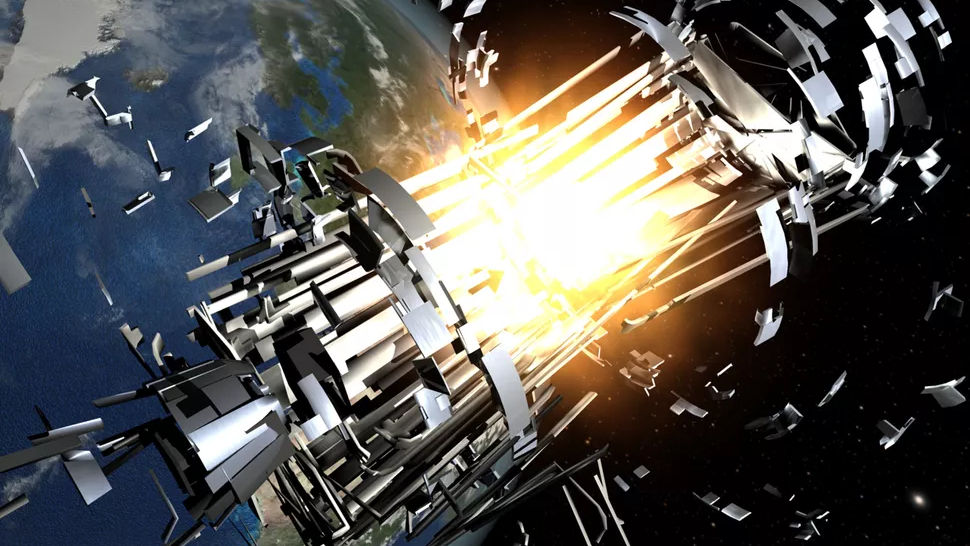Humanity's current space behavior 'unsustainable,' European Space Agency report warns
Satellites are making more maneuvers as orbits become increasingly congested.

Greater efforts are needed to make valuable orbits sustainable, according to a new report from the European Space Agency (ESA).
Space activity — by both national governments and private companies — is growing substantially. More than 2,400 new, tracked payloads were launched into Earth orbit last year, more than ever before, according to ESA's Space Environment Report 2023, which was published in August.
These active satellites, however, need to perform an increasing number of collision-avoidance maneuvers to get out of the way of other satellites and space junk.
Related: 6 types of objects that could cause space debris apocalypse
While the space above Earth is vast, much of the activity is clustered around particularly useful orbital paths and altitudes, particularly in low Earth orbit (LEO). Keeping these safely useful is vital for protecting astronauts and spacecraft, which provide a range of commercial, economic and scientific uses.
"Long term, increasing space activity could lead to 'Kessler Syndrome' — the situation in which the density of objects in orbit is high enough that collisions between objects and debris create a cascade effect, each crash generating debris that then increases the likelihood of further collisions. At this point, certain low Earth orbits will become entirely inhospitable," the report warns.
We are not at this stage yet, but the situation is not good. Decades of space activity have already led to clouds of space debris in orbit around Earth.
Get the Space.com Newsletter
Breaking space news, the latest updates on rocket launches, skywatching events and more!
Junk satellites, inactive spacecraft, debris from rocket launches and fragmentation of satellites and the results of collisions mean that, according to ESA models, there are likely over one million objects in Earth orbit more than 0.4 inches (1 centimeter) wide, hurtling around at orbital velocity.
While measures to mitigate the effects of associated space debris are being increasingly adopted by space actors, such as ensuring satellites deorbit within a defined time frame after their missions end, this is not enough, according to the report.
"The adoption of space debris mitigation measures is improving, but, given the sheer number of new satellites and amount of existing debris, the rate is still not enough, and our behavior in space appears to be unsustainable in the long term," the 123-page ESA report states.
Space debris mitigation guidelines state that satellites should vacate protected orbits within 25 years after their use has come to an end.
The good news is that satellites launched over the last decade are largely following international guidelines for deorbiting, either passively or actively.
"Early constellation satellites had very low compliance, for example, while the compliance of those launched this decade is almost 100%," the report states.
Active satellites, with their sophisticated tracking and alert systems, are also able to avoid each other using propulsive systems.
However, satellites that are not no longer active and not removed from their operational orbits at the end of their missions could collide with other satellites. Such smashups can create dangerous clouds of debris, further cluttering orbits with high-speed shrapnel for years to come.
"Even if we launched nothing from now on, collisions among the space debris objects already in orbit would cause the problem to get worse," the report authors write. "Disposing of satellites efficiently is one of the most important things for keeping low-Earth orbits safe."
The report points to ESA efforts such as the ClearSpace-1 space junk collection mission — which was itself, poignantly, struck by debris — and the recent Aeolus managed reentry as demonstrating a more sustainable approach.
The take-home message: As more stuff than ever is going up into space, it's important to bring it back down safely.
Join our Space Forums to keep talking space on the latest missions, night sky and more! And if you have a news tip, correction or comment, let us know at: community@space.com.

Andrew is a freelance space journalist with a focus on reporting on China's rapidly growing space sector. He began writing for Space.com in 2019 and writes for SpaceNews, IEEE Spectrum, National Geographic, Sky & Telescope, New Scientist and others. Andrew first caught the space bug when, as a youngster, he saw Voyager images of other worlds in our solar system for the first time. Away from space, Andrew enjoys trail running in the forests of Finland. You can follow him on Twitter @AJ_FI.









